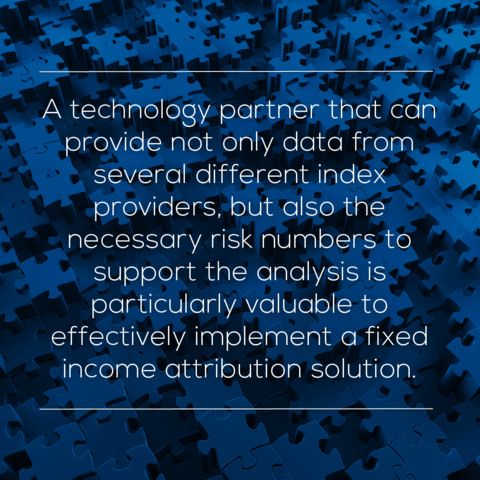Calculating accurate performance attribution in the fixed income markets is a crucial element to success. Not only is fixed income attribution vital to inform, support and defend investment decisions, but sales and marketing personnel use the data for client acquisition and retention activities. Clients also rely on fixed income attribution to determine how well (or not well) the firm is enacting their desired investment strategies.
Explosion of data
However, many firms still struggle with generating accurate, reliable attribution data. For one, the explosion of data in financial markets – especially in fixed income – means that generally it is difficult for fund managers to properly analyze and process this information holistically. As reported by Investment News, additional regulatory requirements also have increased the types of data available designed to help investors make decisions. Indeed, as the research firm Celent stated, “we are at the dawn of new era in the history of data.”
 But legacy technology as well as outdated workflows mean that most firms are unable to fully and efficiently handle the explosion of data today; the sheer volume and complexity of the inputs they need make them unwieldy, slow and limited in nature.
But legacy technology as well as outdated workflows mean that most firms are unable to fully and efficiently handle the explosion of data today; the sheer volume and complexity of the inputs they need make them unwieldy, slow and limited in nature.
Handling the data
So, how can firms handle these increasingly massive data sets and offer clients (and themselves) a clear and accurate picture of a portfolio’s performance with analysis of the drivers of that performance?
In order for a firm to ensure that it is working with the most clean, accurate and controlled data for performance attribution, it needs to work with a robust, modern and ideally cloud-based technology solution that can handle today’s data and regulatory demands. Without one, a firm will be hard pressed to accurately answer important questions such as:
- Were our assumptions correct?
- Have the drivers of our returns been what we thought they would be?
- Do we have the right risk and pricing assumptions and models?
Conclusion
A technology partner that can provide not only data from several different index providers, but also the necessary risk numbers to support the analysis is particularly valuable to effectively implement a fixed income attribution solution. Also, providing options for a firm to use the technology partner’s data or other sources including their own numbers gives the necessary flexibility and can greatly reduce adverse consequences that may result from limited data sourcing.
Now more than ever, accurate fixed income attribution is key to a firm’s growth and success; it is also harder to achieve than ever before.
{{cta(’52aba7d8-4cab-4fbb-9e9d-69995621fef9′)}}